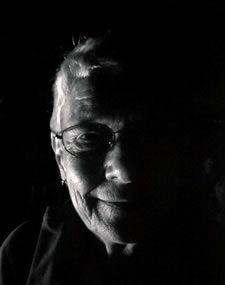 |
Dharma Gleaningsbycynthia rich
|

|
January 15, 2004—January 25, 2004
January 15, 2004
Jo is going on a retreat for a month, and today she shared some of her
apprehensions. If she goes by plane, will she be able to take her zafu?
It gave us both an opportunity to think about attachment, as we climbed
the steep road up Mount Woodsen. I thought she’d taken the first
step to non-attachment. It’s a gentle weaning process, and it
has to begin with a simple registering of our attachments.
For Jo, there’s the special meditation cushion she always uses. That’s great, these ritual objects can be very helpful to the process of centering ourselves. We don’t think about whether we’re attached. One day we travel to a Zen center where we can’t bring our pillow, or perhaps there are benches, not pillows at all. We have to register whether what we’ve been experiencing all along was simple appreciation or attachment. We have to feel the difference. Are we experiencing resistance, annoyance, even anxiety? How long do those feelings last?
We can practice non-attachment by making note of our attachment even before life calls on us to release it. As we do that, we can breathe in the understanding that practice is all about releasing such attachments — even ones that bring us great joy, a lover, a home, a rewarding job, our eyesight. Not that we need to release the lover, the home, the work or put out our eyes. We don’t need to give up the pillow either. Non-attachment doesn’t require that we live in a non-sensory world without pleasures or joys — only that we move always closer to a deep acceptance that they are transitory. And that should heighten our sensuality, our joy.
It’s probably what Margaret Fuller, the transcendentalist, meant when she said: “I accept the universe.” And what Carlyle meant when he said, “Gad, Sir, she’d better!” Although Carlyle may not have understood the depth she was speaking from, he was right: we’d better!
When Jo can release her favorite zafu, she’s that much closer to the power that comes from accepting the universe.
January 17, 2004
As we practice, more and more we go through our days as if we were present
for a wonderful, multidimensional movie. Only instead of a movie, this
life is a real-ie. Sometimes the real-ie will be awesomely beautiful,
like “Winged Migration”, perhaps, or one of those PBS specials
where the camera lingers on a flower or a snake or a moth. Sometimes
engaging with the real-ie of life is like watching “Marty”
or “The Secret Lives of Dentists,” the absolute ordinariness
of life seen with a new clarity and so new beauty. Sometimes the real-ie
whose dimensions we enter into is more like “The Pianist”
or “Monster,” with pain that spills out from our heart.
Still, we do not turn away from that reality, we insist on it even as
we stay in our seats, grateful for the luminous clarity of its truth.
January 18, 2004
Often before I begin to meditate, I say silently to myself, “My
intention is pure,” a kind of clearing of the slate, I suppose.
I’ve noticed that when I am trapped in some suffering —
or when I have trapped myself in some suffering — I may find that
I cannot say this to myself. Then I realize that on that day, my intention
is not pure. I am, however unconsciously, wanting to use that meditation,
not to explore the suffering or learn what it means to live with it,
but to eliminate it, wipe it away. Something in me knows that my intention
is not pure. (Sometimes I say, “My intention is almost pure.”)
January 25, 2004
These past years, I can see that people are drawn to me. It isn’t
because I am now more witty, smart, beautiful — well, maybe a
little. I think it’s because when we become less trapped in our
tight little egos, we become—comparatively—agenda-free.
We are not trying to be “nice,” we are not trying to be
good people, we are not trying to make others like or respect us, we
are not trying to boost our own self-image. We’re not busy with
all that work. We can be there, simply and directly, from moment to
moment.
Agendas (even “I should try to be a kinder person”) are fences we set up between ourselves and other people. The fences are different heights, but they block our view. If my agenda is very important to me—”I want you to think well of me”—my fence is tall, and I may see only the top of your head while we are talking. Other people sense that. When they feel the fences dropped, they feel seen, heard.
We all have agendas sometimes. I want women I know to come to the political actions I help organize. And I often say—a little preemptively perhaps—that I’m not a therapist. So I sometimes give advice strongly, but when I do, I laugh and talk about my advice as an agenda—I put my motives on the table, and people can see the game I’m playing, and decide if they want to accept what I put forward, with both of us knowing it comes from an ego-driven place.